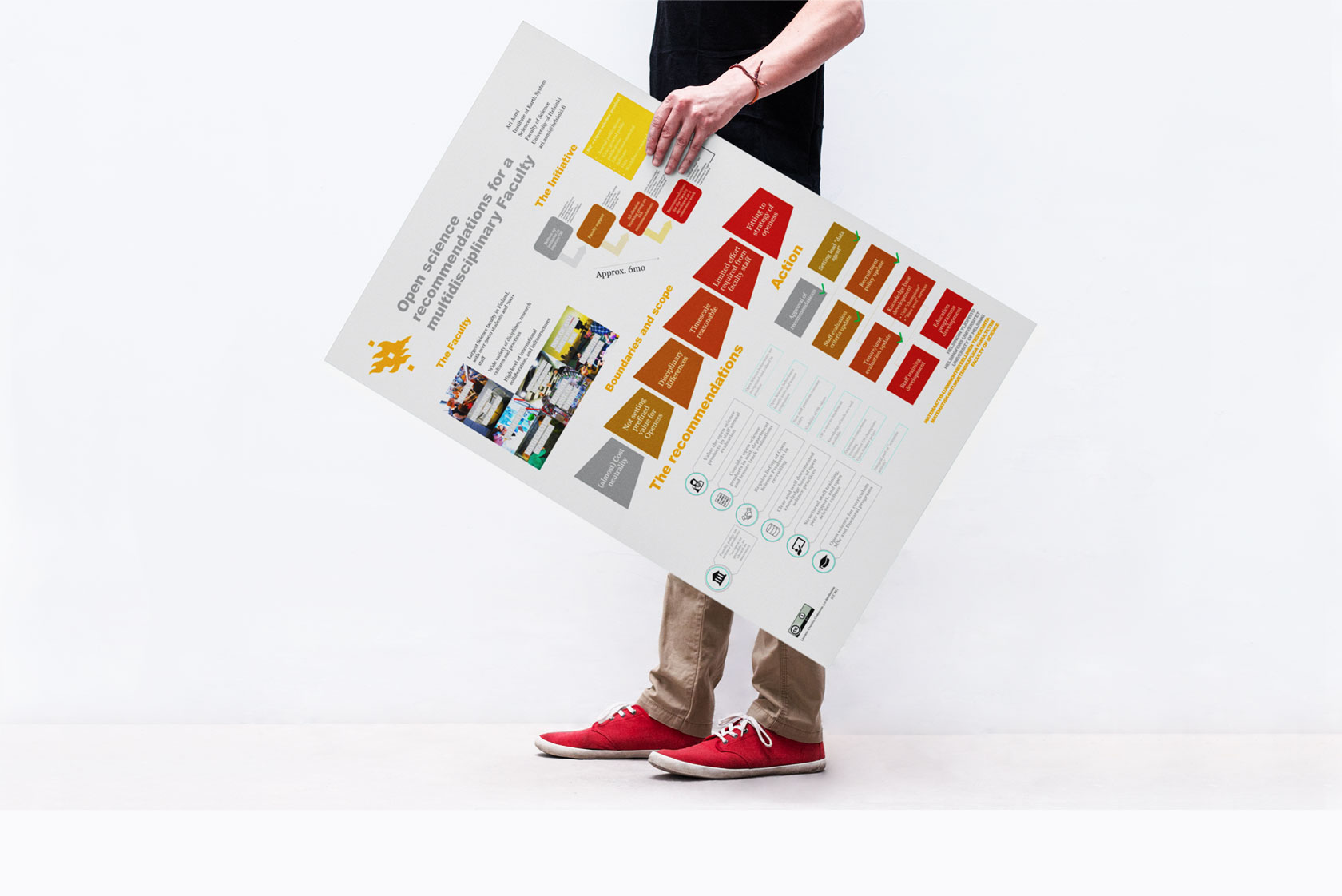
Open Science: How to Implement it in a Multidisciplinary Faculty – 7 Recommendations
Ideally, the implementation of Open Science should take little time and resources and be accepted by the scientific community. Ari J. Asmi has accompanied the process of developing common Open Science recommendations at the Faculty of Science at the University of Helsinki and provides insights into how this can be achieved.
An interview with Ari J. Asmi

Ari J. Asmi is research infrastructure coordinator at the University of Helsinki, Faculty of Science, a multidisciplinary faculty. There he has been involved in the process of developing common and workable Open Science recommendations with all stakeholders for the medium-sized science-oriented university faculty. The result is seven recommendations, which he already presented at the Open Science Conference 2021 in a poster presentation.
Skip to PDF contentIn the interview, he reports on how the recommendations came about, why it is so important to also have Open Science sceptics involved, what the biggest challenges were and still are in developing and implementing them, and what he would advise others who would themselves like to create suitable recommendations for a more Open Science practice at their own faculty.
Ari, you accompanied the process of developing a common Open Science policy at the Faculty of Science at the University of Helsinki. What was the outcome of this process?
We created a working group, with the help of the dean and the faculty administration. This group included representatives from all divisions of the Faculty of Science at the University of Helsinki, and importantly did not have only “Open Science advocates”, but mostly normal scientists and research coordinators from different divisions. We agreed that the Open Science recommendations should be easy to implement, with relatively quick time-scale (from months to few years), not resource demanding, and above all – acceptable to the science community in the faculty. This led to a suitable ambition level for the recommendations, which in turn helped their acceptance in the faculty. We agreed on seven key recommendations:
- Set the overall faculty policy on science products: “as open as possible, as closed as necessary”.
- Value the Open Science products in the staff annual development discussions.
- Consider Open Science products in unit, department and tenure track evaluations.
- Require listing of Open Science products in recruiting.
- Create a short, clear and well documented knowledge base of Open Science best practices in the faculty.
- Organise structured staff training on the best practices, facilitate peer support, and Open Science culture in the faculty.
- Develop Open Science content for curriculum MSc and Doctoral programmes.
Open Science recommendations should be easy to implement, with relatively quick time-scale (from months to few years), not resource demanding, and above all – acceptable to the science community in the faculty.
– Ari J. Asmi
The first recommendation is more a statement, second to fourth are based on long term change in internal science evaluation towards openness, fifth and sixth on helping the faculty staff to adjust for Open Science, and seventh towards future generations. A more detailed version of the recommandations can be found in this document: Open Science Recommendations for the Faculty of Science.
Skip to PDF contentA key point was also to always look for a holistic view on scientific end products, not only on scientific journal articles. This includes then, e.g., software, datasets, teaching material, etc. Another key point for us was not to prescribe value difference between open/closed scientific products, but instead just highlight the openness in all activity, and asking to justify the closed products if needed.
(How) Have you practically implemented the seven recommendations in the faculty?
The recommendations were accepted with enthusiasm on the faculty board level and from the dean, which made including the development discussion and staff recruitment changes in principle easy. They were faculty decisions, however, so I am not sure how well they have yet been implemented by the divisions’ administrations. The knowledge base is clearly more effort requiring part, and even with some level of resources, it is very dependent on finding proper contact points on each division (and even individual groups) to give information on domain-specific repositories, journals, etc. I am now personally trying to recruit semi-volunteers to do these. The training part is quite well dependent on the knowledge base, and the inclusion of new Open Science courses to curricula will most likely happen on the next round of MSc and PhD programme development.
What were your biggest challenges? What were the biggest concerns from the faculty and researchers? How were you able to overcome the obstacles and convince the persons concerned?
The main issue came from time and resource limitation of researchers. There is already a lot of “extra” work added to the researchers, as administrative staff has been reduced, and some of the Open Science relevant tasks (e.g. data management plans) are seen by some researchers as additional burden. This was somewhat reflected on the response for the plan, and how we developed it. The idea of having a common knowledge base was directly responding to the idea of reducing time required for these tasks. Also, some worries were about too rapid changes on how research and researchers are evaluated, making career planning challenging. This was responded by specifically avoiding any specific value for Open Science products in comparison to traditional evaluation criteria.
To what extent were and are libraries involved in this process?
We had a few times some contact with the university library, and I am personally well connected to some parts of their team on Open Science. The recommendations themselves did not go through any kind of close evaluation with them, but their services will be of course extremely important for the knowledge base, training and potentially even career advancement follow up, i.e. on following the publication of Open Science products.
What are your tips for other faculties that would like to anchor these principles and put them into practice?
An important part was to have a working group with enough of sceptical people along with Open Science enthusiasts. It is easy to come up with very idealistic approaches, which cannot then be implemented. Ambition is good, but realistic and short-to-medium time frame and minimal resource needs worked at least for us well. Support from top level (faculty dean and university strategy) is important, but these things have to be supported from bottom as well – so having diversity is excellent addition.
We were talking to Ari J Asmi.
This article emerged from the Open Science Conference 2021. The next International Open Science Conference (#OSC2022) will be held on March 08-09, 2022. Stay tuned for more information on the conference website.
You may also find this interesting:
Ari J. Asmi is a research infrastructures coordinator in the Faculty of Science, University of Helsinki. Most of his projects are involved on creating interoperable environmental research infrastructures across Europe and developing European Open Science Cloud. He is an active member of Research Data Alliance and other Open Science communities. Ari can also be found on LinkedIn, ORCID, ResearchGate and Twitter.
Portrait: Ari J. Asmi©
View Comments

User Experience for Libraries: A Multi-site Approach at the University of Westminster
In 2019, an ambitious user experience project started in the University of...



